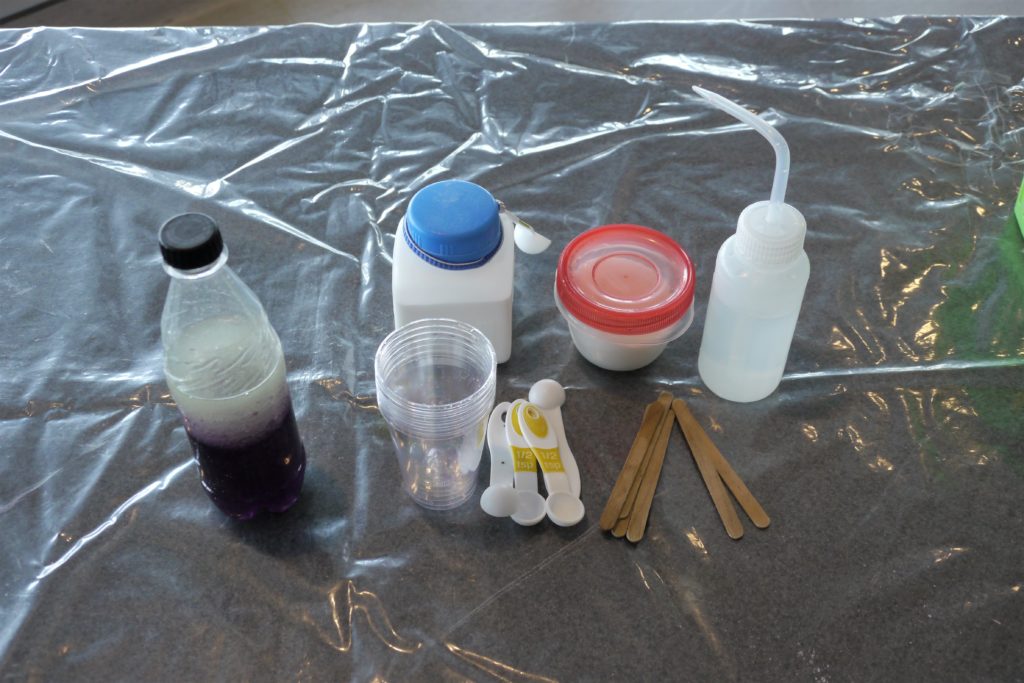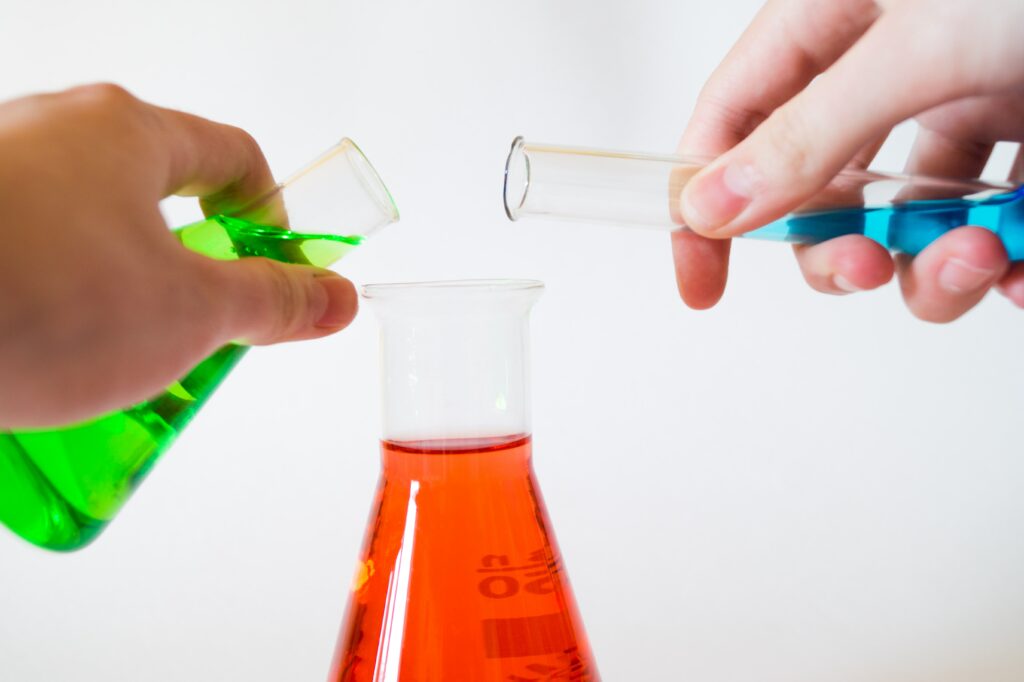Students become polymer chemists who will make gelatinous worms.
Polysaccharides are polymers that are made by linking hundreds of glucose molecules. This activity uses sodium alginate, a polysaccharide polymer isolated from seaweed. The monomer glucose is sweet and dissolves easily in water but the polymer starch is not sweet and forms a thick, sticky paste in solution.
In this activity, the sodium alginate immediately changes from a liquid to a solid when it contacts the calcium chloride solution. The calcium (Ca++) ions replace the sodium (Na+) ions and link the polymer chains together — much like the rungs of a ladder link the two sides. The result does not dissloves (is insoluble) in the calcium chloride solution. The squishy stuff inside the ''worms'' is unreacted sodium alginate. If you leave the worm in the solution longer, more calcium ions will react and the worm's ''skin'' will get thicker.

